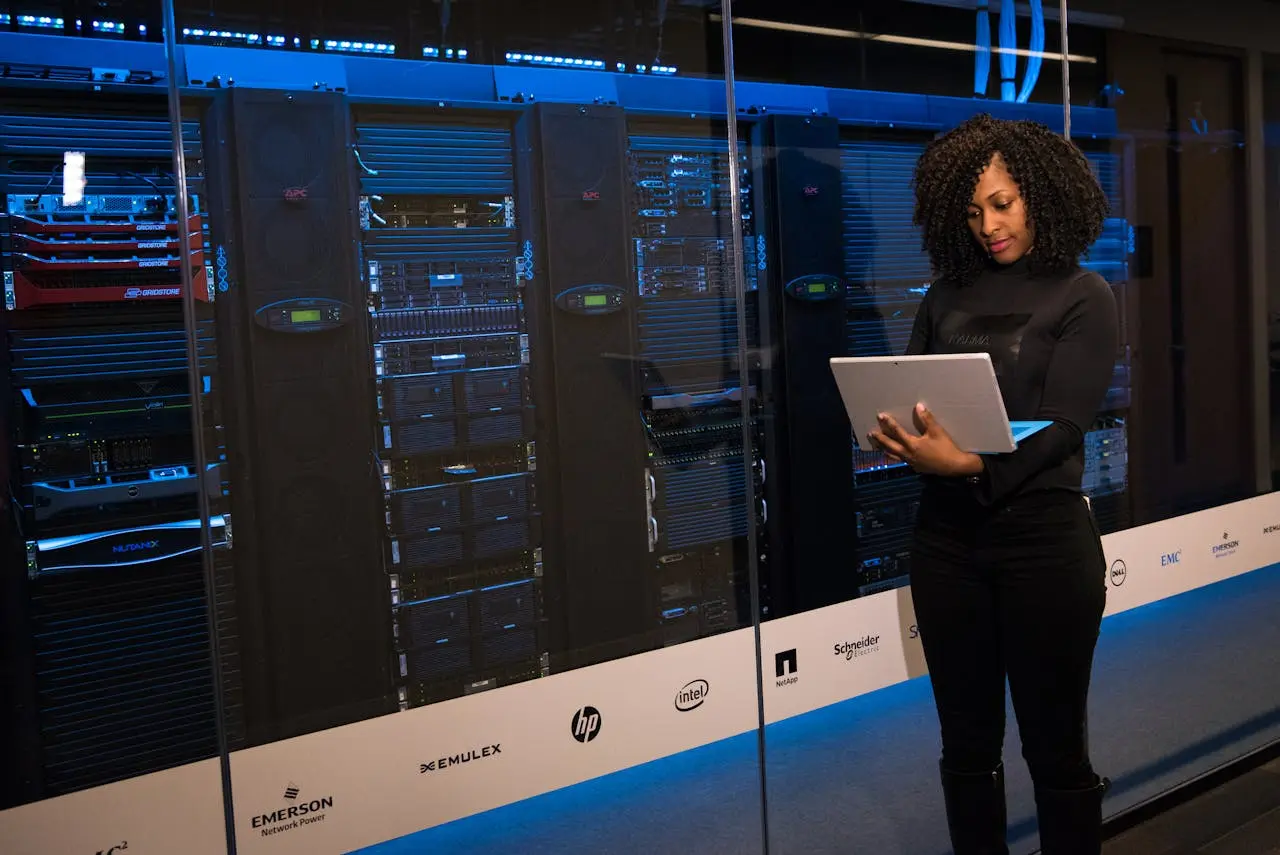Blog
Cybersecurity in Industrial & Manufacturing Operations

In 2025, Canadian manufacturers are more connected than ever. Industrial IoT systems, cloud-based ERPs, and automated production lines have revolutionized efficiency and output. But with greater connectivity comes greater risk — and cyberattacks targeting manufacturing are on the rise.
For risk and compliance-focused managers, understanding industrial cybersecurity in Canada is critical to protecting sensitive data, safeguarding production, and ensuring uninterrupted operations.
1. Why Cybersecurity is a Critical Issue for Canadian Manufacturing
Manufacturing has become one of the most targeted industries for cyberattacks, overtaking even healthcare and finance in some global reports.
Key reasons manufacturing is vulnerable:
- Legacy Systems – Many factories still rely on outdated control systems without modern security.
- High-Value IP – Designs, formulas, and production methods are prime targets for theft.
- Production Disruption Risks – Downtime caused by cyber incidents can cost millions per day.
- Complex Supply Chains – Each supplier connection adds potential entry points for attackers.
Fact: According to the Canadian Centre for Cyber Security, ransomware attacks on critical infrastructure — including manufacturing — have increased over 200% in the past three years.
2. Common Cyber Threats Facing Manufacturers
a) Ransomware
Malware that encrypts data or control systems, holding them hostage until payment is made.
b) Phishing & Social Engineering
Cybercriminals target employees through fake emails or messages to steal credentials.
c) Industrial Espionage
Competitors or nation-state actors may attempt to steal proprietary designs or trade secrets.
d) Supply Chain Attacks
Compromising a vendor’s systems to gain access to your network.
e) IoT Device Exploits
Unsecured IoT sensors and controllers can serve as backdoors into production networks.
Related Reading:
- Adopting Industry 4.0 Technologies for Canadian Manufacturing — Learn how to integrate IoT securely into smart manufacturing systems.
3. Core Elements of Industrial Cybersecurity
A strong manufacturing data protection strategy should include both IT (information technology) and OT (operational technology) security.
Network Segmentation
Separate production systems from office networks to limit attack spread.
Access Control
Use role-based permissions and multi-factor authentication to prevent unauthorized access.
Data Encryption
Encrypt sensitive files and communication between systems to prevent interception.
Regular Patching & Updates
Apply security patches promptly to close known vulnerabilities.
Secure IoT Systems
Install IoT devices with built-in security features, change default passwords, and update firmware regularly.
4. Building a Cybersecurity Roadmap for Manufacturing
Step 1 – Risk Assessment
Identify critical assets, potential vulnerabilities, and the likely impact of a cyberattack.
Step 2 – Policy Development
Create cybersecurity policies covering employee behaviour, device usage, and incident reporting.
Step 3 – Technology Implementation
Deploy firewalls, intrusion detection systems (IDS), endpoint protection, and secure IoT solutions.
Step 4 – Employee Training
Human error is the top cause of breaches. Train staff to identify phishing and follow security protocols.
Step 5 – Incident Response Plan
Have a documented plan for containing, investigating, and recovering from cyber incidents.
Related Reading:
- Digital Transformation Strategies for Industrial Businesses in 2025 — See how cybersecurity integrates into broader modernization efforts.
5. Compliance and Standards for Cybersecurity in Canada
Manufacturers may need to comply with:
- ISO/IEC 27001 – Information Security Management Systems
- NIST Cybersecurity Framework – U.S.-Canada aligned security guidelines
- Canadian Cyber Security Standard (CAN/CSA-ISO) – National standards for critical infrastructure
- GDPR / PIPEDA – For handling personal data in global supply chains
6. Real-World Canadian Cybersecurity Case Study
A Quebec-based aerospace manufacturer suffered a ransomware attack that halted production for six days. With no recent backups, the company faced a $1.2 million ransom demand.
After partnering with Zrafted, they:
- Implemented secure IoT systems with encrypted communications
- Created a 24/7 monitoring and threat detection program
- Established daily offsite backups to prevent future data loss
Within three months, they were fully compliant with ISO 27001 and reduced cyber risks significantly.
7. Future Cybersecurity Trends in Manufacturing
By 2030, we expect:
- AI-Powered Threat Detection – Identifying attacks in milliseconds
- Zero Trust Architectures – Verifying every user and device continuously
- Blockchain for Supply Chain Security – Ensuring tamper-proof transaction records
- Integrated Cyber-Physical Security – Merging IT and OT defenses
8. Quick Wins for Strengthening Manufacturing Cybersecurity
- Change default IoT device passwords immediately
- Disable unused network ports and services
- Limit remote access to critical systems
- Schedule quarterly vulnerability scans
- Require multi-factor authentication for all system logins
Conclusion: Security is Now a Production Asset
Cybersecurity in manufacturing is no longer an IT-only concern — it’s a core business risk. From protecting intellectual property to keeping automated production lines running, industrial cybersecurity in Canada requires proactive planning, continuous monitoring, and secure IoT integration.
Protect your systems—get Zrafted’s industrial cybersecurity readiness toolkit and start building a cyber defense strategy that keeps your operations running safely in the digital age.
FAQs: Cybersecurity in Industrial & Manufacturing Operations
Q1: Why is manufacturing a top target for cyberattacks?
A: Manufacturers store valuable intellectual property and rely on operational systems that, if disrupted, can cause massive financial losses.
Q2: How can I secure IoT devices in my factory?
A: Change default passwords, enable encryption, update firmware regularly, and limit device access to secure networks.
Q3: What’s the difference between IT and OT security?
A: IT security protects business data and systems, while OT security focuses on production equipment and control systems.
Q4: How often should I update my security systems?
A: Apply patches and updates as soon as they’re available, and review your security architecture at least annually.
Q5: Are there government resources for industrial cybersecurity in Canada?
A: Yes, the Canadian Centre for Cyber Security offers guidelines, and federal grants may be available for cybersecurity upgrades.
Share
15 Minutes Free Discovery Call
How Zrafted Can Help Businesses?
- Contact Centre Solutions
- Managed IT Services
- Digital Marketing
- Business Process Outsourcing
- Virtual Assistance
- E-Commerce

